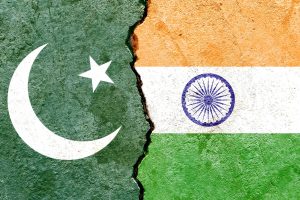On March 9, an Indian missile, reportedly a BrahMos, crossed into Pakistani territory and flew for over 120 kilometers before landing in Mian Channu. About 24 hours later, Pakistan’s Inter-Services Public Relations (ISPR) Director General Maj. Gen. Babar Iftikhar said that “a high speed flying object” came from India and landed in Pakistani territory slightly before 7:00 pm local time. Another 24 hours later – two days after the missile hit Pakistan – the Indian government publicly confirmed that one of its missiles had been accidentally launched while undergoing “routine maintenance” and that it crossed into Pakistan. India called the incident “deeply regrettable” but also expressed relief that no lives were lost.
On March 15, in the Indian Parliament, Indian Defense Minister Rajnath Singh admitted to an “inadvertent release of a missile… during routine maintenance and inspection.” He said that India had “later learnt that the missile had landed inside the territory of Pakistan.”
Although this incident thankfully did not lead to an escalation between India and Pakistan, and both sides appear to have acted with maturity amid uncertainty, it raises a lot of questions that are yet to be answered.
That the missile launched by India landed inside Pakistan, a nuclear rival, is obviously a serious matter. India was lucky that the missile was unarmed and there were no casualties, and that Pakistan did not use this opportunity to engage in a retaliatory attack. As experts have noted, “there are few cases in history – if any – of a nuclear-armed rival accidentally firing a missile into the territory of another nuclear-armed rival.” While there have been accidents in the past in other countries that involved even nuclear weapons, there hasn’t been a case of an accidental launch of a missile between two nuclear-armed states.
A number of issues about this incident remain unclear. One is about the type of missile that was involved. While neither government explicitly stated it, Indian media reports have quoted Indian defense officials as saying that the weapon involved was the BrahMos cruise missile. The BrahMos was a result of a joint India-Russia venture, which led to the modification of the Russian P-800 Oniks anti-ship cruise missile. The BrahMos program has been a successful one for India and all three Indian military services have purchased the missile. India has also planned to export the BrahMos missiles and bagged its first foreign customer, the Philippine armed forces, recently. If the missile involved was in fact a BrahMos, it is likely to raise questions from its users from within the Indian military and also among foreign customers. Thus, resolving the question of how this accident happened has implications within Indian military in addition to international security ramifications. The Indian government has promised a thorough probe, although it is unclear whether the results of the probe will be released publicly.
In addition to the missile type involved in the accident, there are also questions about how the accidental launch took place. It is unclear from the different Indian statements, and even from the unofficial source-based reporting in Indian media, whether the missile launch took place because of technical problems, some kind of human error, or some procedural lapse. Each has a different implication. The most concerning would be the question of human error or procedural lapse. The Indian military services over the last several years have witnessed many high profile tragedies and mishaps, including a helicopter accident that led to the death of India’s first Chief of Defense Staff, General Bipin Rawat, his wife, and several other officers in 2021; the “friendly” shooting down of an Indian helicopter by Indian air defenses in Srinagar at the height of the Balakot crisis in 2019; an accident that left India’s indigenous Arihant submarine out of commission for many months in 2018; and a fire and explosion on board an Indian Kilo-class submarine in 2013 that killed 18 crew members.
A third set of questions are about the sequence and details of events. While both India and Pakistan agree that the missile entered Pakistan at around 7 p.m., they seem to agree on little else. Pakistan claimed to have tracked the missile from Sirsa in Haryana state in India, but Indian officials unofficially stated that it was not launched from Sirsa, which does not appear to have any military bases. The Indian officials have also disputed the missile track that Pakistan provided and their claim that the missile following a predetermined path but did not hit the intended target due to “certain factors.” This raises questions about whether Pakistan was able to detect the Indian missile and whether there are gaps in its air defense coverage.
Equally unclear but with more dangerous implications is the question of precisely when India informed Pakistan about the accident. Considering that the two sides are nuclear-armed rivals, they have developed protocols to minimize the possibilities of accidents of this kind. There are agreements in place that limit military movements close to the border, constrain missile testing, and provide for hotlines for the two militaries to contact each other in case of emergencies. The hotline issue is particularly salient as Pakistan’s National Security Advisor Moeed Yusuf has claimed that India did not use the hotline. India, however, states that it informed Pakistan about the errant missile well before Pakistan’s public statement on March 10. It is, of course, possible that India informed Pakistan without using the hotline. The issue is important because it potentially affects how the two countries will behave and how much trust they will have regarding each other in any future crisis.
Given the embarrassment that India has suffered, there will be a strong incentive for New Delhi to thoroughly probe this incident. Hopefully, this will also ensure greater caution in both countries about how they manage their military forces.
































